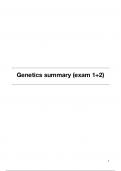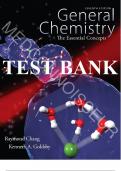Samenvatting
Summary Genetics (AB_1135) partial exam 1+2
- Instelling
- Vrije Universiteit Amsterdam (VU)
Complete summary of the course Genetics (AB_1135) from the 1st year of biomedical sciences, VU Amsterdam. This summary contains all information needed for partial exam 1 and 2, and includes all the material from the lectures and the book that was required for this course. This summary was made duri...
[Meer zien]





